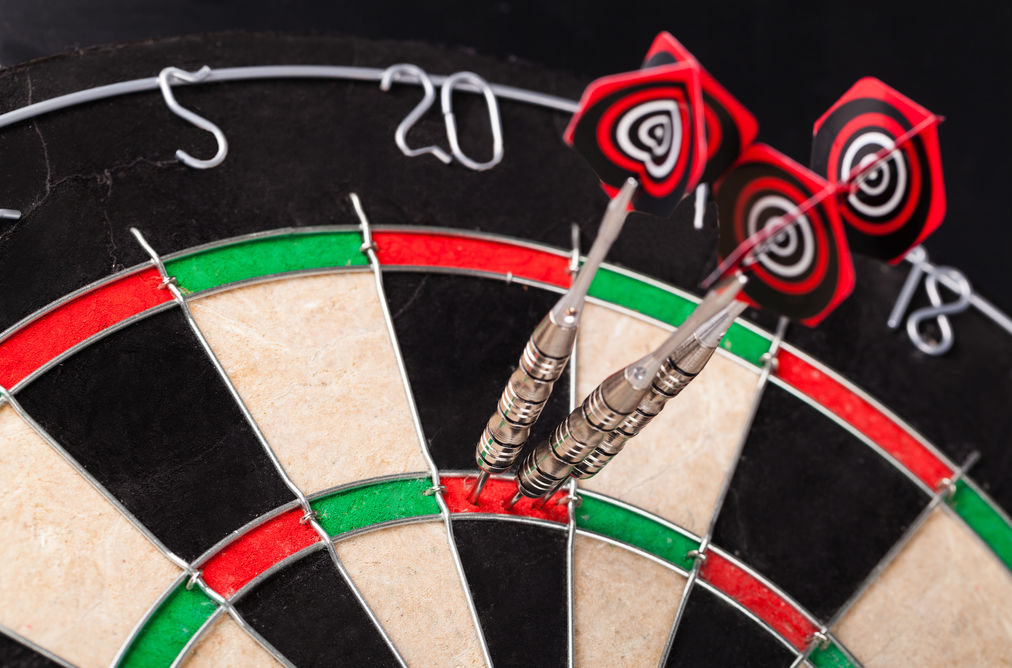
June 10, 2016, by Graham Kendall
Why the dartboard looks like it does, and how bad players can do better
“There are many variants of the game of darts, but by far the most common sees players start with a score of 501 and take turns to reduce this score using three darts at a time until one of the players reaches zero exactly.
The layout of a darts board is a circle cut into 20 equal arcs, with an inner and outer bullseye at the centre, and two rings, one halfway and one on the outer rim of the circle, representing treble and double scores respectively. The board was designed by Brian Gamlin in 1896, with the idea that by placing large numbers next to small numbers mistakes are heavily penalised. For example, if you aim for 20 and are off target, you will score five or one by hitting one of the arcs that lie to either side. Similarly, 19 is penalised by inaccurate throws landing in the neighbouring arcs scoring three or seven. The difficulty is increased by the fact that the rules of the 501-down game require that the last dart thrown must hit a double.”
… so starts a recently published article in TheConversation that looks at why a dartboard is laid out the way it is.
Other Conversation articles that we have featured on this blog can be seen here.
No comments yet, fill out a comment to be the first

Leave a Reply